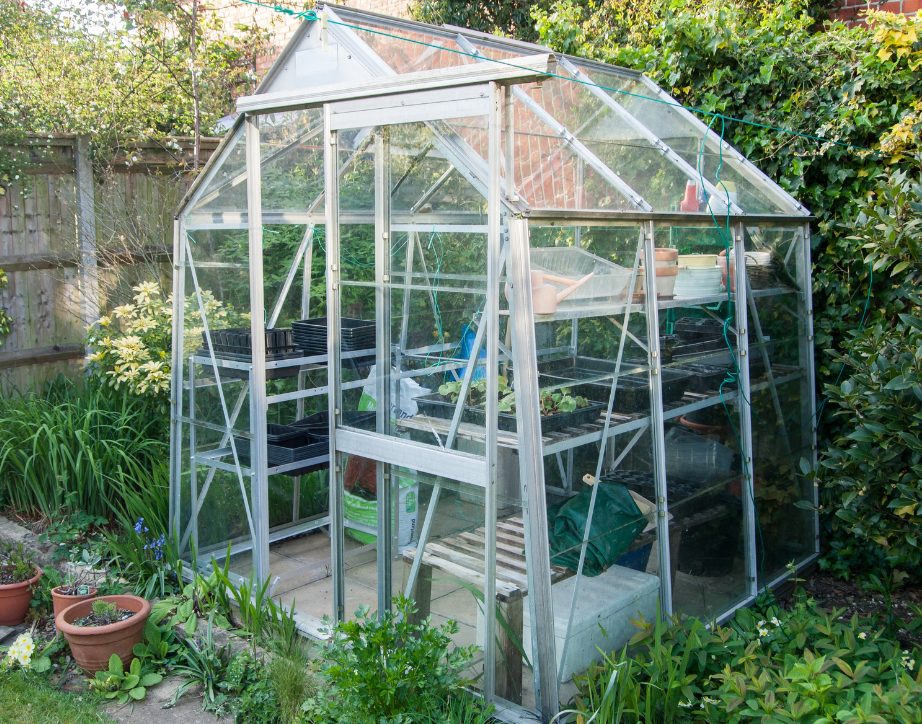Greenhouse Gardening Basics
*We may earn a commission for purchases made using our links. Please see our disclaimer to learn more.

Introduction
Hey there fellow gardening enthusiasts! Today, I want to dive into the captivating world of greenhouse gardening basics. Greenhouses offer a haven for plants to thrive, giving you the power to create an ideal microclimate that extends your growing season and opens up possibilities for cultivating various plants. In this article, we’ll explore why greenhouse gardening is so special, and I’ll provide some valuable suggestions to help you make the most of your own backyard greenhouse.
What is Greenhouse Gardening?
At its core, greenhouse gardening is the art of nurturing plants within an enclosed structure, typically made of glass or plastic, that allows sunlight to enter and traps heat, creating a controlled environment for plants to grow. This controlled atmosphere protects plants from harsh weather conditions, extends the growing season, and enables the cultivation of plants that may not otherwise thrive in your local climate.
Why Choose Greenhouse Gardening?
You might wonder why you should invest in a backyard greenhouse when you can simply plant outdoors. Well, greenhouse gardening offers a plethora of advantages! Firstly, it provides an extended growing season, allowing you to grow tender plants even during cold winters. Secondly, you gain better control over environmental factors like temperature, humidity, and light, leading to healthier and more vigorous plants. Additionally, greenhouses shield your plants from pests and diseases that can ruin all your hard work in traditional gardens.
Getting Started with Greenhouse Gardening
If you’re ready to embrace the world of greenhouse gardening, let’s begin with the basics:
Selecting the Right Greenhouse
Choosing the right greenhouse for your needs is crucial. Consider factors like the available space in your backyard, the types of plants you want to grow, and your budget. There are various options, from small portable greenhouses to large, permanent structures. Select the one that suits your requirements and fits well into your garden layout.
Choosing the Ideal Location
The location of your greenhouse plays a vital role in its success. Place it where it can receive maximum sunlight throughout the day. South-facing locations are often ideal, as they get the most sunlight exposure. Avoid areas with large trees or buildings that might shade your greenhouse and interfere with its light and temperature.
Essential Equipment and Supplies
Before you start planting, make sure you have all the necessary equipment and supplies. This includes pots, trays, a watering system, shelves or benches, ventilation, and temperature controls. Proper equipment will streamline your gardening process and ensure your plants have the best growing environment.
Preparing the Soil
Good soil is the foundation of any successful garden. Ensure your greenhouse soil is rich in nutrients and well-draining. Consider using a mix of compost, peat moss, and perlite to create a suitable growing medium for your plants.
Optimal Plant Selection
Now comes the fun part – choosing the plants you want to grow! Select a variety of plants that thrive in greenhouse conditions, such as tomatoes, cucumbers, herbs, and exotic flowers. Research their specific needs, and ensure they are compatible when planting together.
Watering and Fertilizing Tips
Consistent watering and proper fertilization are essential for plant health. Set up a watering schedule and monitor your plants regularly. Be careful not to overwater or underwater, as both can lead to problems. Additionally, use organic fertilizers to nourish your plants naturally.
Temperature and Humidity Control
Greenhouses allow you to control the internal temperature and humidity levels. Maintain an optimal temperature range for your plants and invest in a thermometer to monitor changes. Adjust ventilation and use misting systems to manage humidity effectively.
Pest and Disease Management
Despite the protective environment, pests and diseases can still find their way into your greenhouse. Inspect your plants regularly and take immediate action if you spot any issues. Consider using natural remedies or organic pesticides to minimize the impact on the environment.
Seasonal Considerations
As the seasons change, so will the needs of your plants. Adapt your greenhouse environment accordingly, providing shade during scorching summers and insulating during frosty winters.
Harvesting and Maintenance
Harvest your crops at the right time to enjoy the fruits of your labor. Regularly maintain your greenhouse by cleaning, pruning, and inspecting for any damage.
Conclusion
Congratulations on embarking on this exciting journey of greenhouse gardening! The rewards are plentiful as you nurture vibrant and healthy plants year-round. Remember, experimentation is the key to success in gardening, so don’t be afraid to try new plants and techniques. Enjoy the process, and let nature’s beauty unfold before your eyes.
FAQs
- Can I grow any plant in a greenhouse?
Yes, you can grow a wide variety of plants in a greenhouse, from fruits and vegetables to flowers and herbs. Just ensure you provide the right conditions for each type of plant. - Do I need a large backyard for a greenhouse?
Not necessarily. There are various sizes of greenhouses available, including small ones suitable for compact spaces. - How much time do I need to dedicate to greenhouse gardening?
The time required depends on the number of plants and their specific needs. Generally, expect to spend a few hours each week on maintenance and care. - Can I use artificial lighting in my greenhouse?
Yes, you can use artificial lighting to supplement natural sunlight, especially during the darker winter months. - Do greenhouses require a lot of water?
Greenhouses are generally efficient in water usage, but the amount needed will depend on the types of plants you grow and their water requirements. Proper irrigation systems can help optimize water usage.
